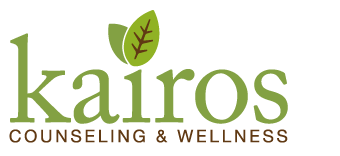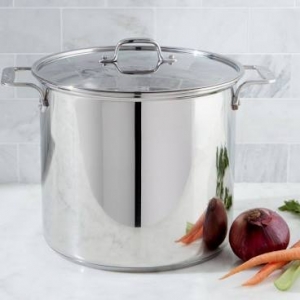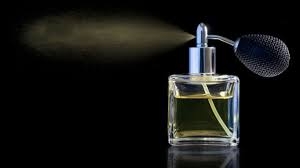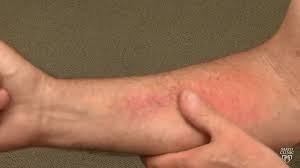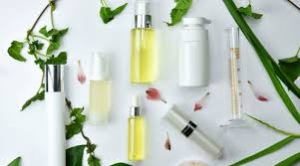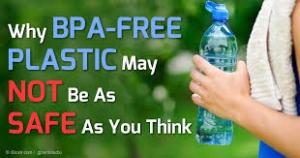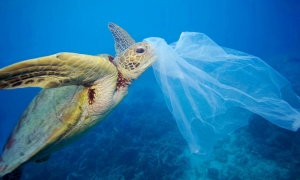10 Characteristics of a Toxic Relationship
Relationships are meant to be life giving, challenging and give a sense of connection and belonging. Unfortunately, I see many clients who are stuck in“toxic relationships” that often do the opposite. When I say toxic relationship, I mean any relationship whether it is a significant other, friend, child or family member. Toxic literally means poisonous. It is something that is harmful to us and our health and functioning. Therefore, a toxic relationship will interfere with our mental and emotional health and keep us from thriving. I also use toxic relationships and emotionally abusive relationships synonymously.
Another way to define a toxic relationship is relationships that involve emotional abuse. If a relationship has any kind of physical or sexual abuse, of course it is unhealthy and unsafe. I focus here of emotional abuse, however, because emotional abuse can often be very difficult to identify and is often a precursor to or a part of physical and sexual abuse. Many times emotional abuse can be just as damaging to a person as more overt forms of abuse. One way to define patterns of emotional abuse that characterizes a toxic relationship is any behavior or attitude that emotionally damages another person, regardless of whether there is conscious intent to do so.
An important thing to keep in mind here is that we do not need to demonize those who have hurt us or who we have been in a toxic relationship with. People who emotionally abuse often do so because that was what was modeled to them. They may not even realize that their behaviors or patterns in relationships are harmful and hurtful. This does not excuse their behavior but can help us have more compassion and realize that it’s not all about us. In addition, I often hear people use the term “toxic” in a very dismissive way (ie: Oh she is so toxic), as if that person should be quarantined and ignored forever. It also seems like using this word is a get out of jail free card to not look at ourselves and what part we have played in a toxic relationship. Of course there are cases when someone is so abusive or sick that there is nothing you can do to change things other than leave the relationship completely, other times, however, we can empower ourselves to change our patterns in our unhealthy relationships if we know what to look for and how to respond. If you are concerned that you might be in a toxic relationship or are unsure, read on to learn some common signs and ways to deal.
Identifying Abuse
Before we jump into some very specific forms of emotional abuse, take a moment to check in with yourself and by asking these questions:
How do I feel after spending time with this person?
Have I changed since spending time with this person? How?
What do my trusted friends and loved ones have to say about my relationship with this person?
Do I feel/believe that I have as much to offer them as they offer me?
Do I feel/believe that my opinion, ideas and feelings matter to them?
How do I feel while I am spending time with them? How does my body feel? (Relaxed, tense?)
You may notice that after spending time with certain people you feel peaceful or fulfilled while after spending time with others you feel drained or unsure of yourself. These are important feelings to pay attention to. Of course if you have one negative interaction with someone that makes you feel uneasy, that does not necessarily mean they are toxic and you should end the relationship. We are all imperfect humans and all good relationships have conflict and discomfort at times. However, if you find your interactions with someone consistently result in you feeling down, drained or insecure, there might be some toxic, emotionally abusive dynamics. Since some forms of toxicity in relationships can be so subtle, it can be helpful to check in with ourselves and our feelings. We might feel nervous or tense when we are about to see a certain person but not know why. What is fascinating is that our emotions and bodies can often pick up on emotional abuse before our conscious minds can. One possible reason is that we have been in these kinds of relationships most of our lives and think they are normal. Or the negative patterns started so small and grew at such a gradual pace that we have not realized how toxic our relationship has become. We can build up a tolerance to being treated poorly. And, the very nature of emotional abuse often leads to self doubt in the abused.
Signs of Emotional Abuse
Emotional abuse involves clear and consistent patterns that I will list and go over below. These dynamics are destructive and often the intent is to make the other feel badly about him or herself. Remember, emotional abuse is any behavior or attitude that emotionally damages another person, regardless of whether there is conscious intent to do so. It can be overt and very openly demeaning or covert (more subtle). And as the definition says, it can be intentional or unintentional. You may realize there are some very subtle forms of one of these characteristics that simply need to be pointed out in order to make a change. If you identify any of these dynamics in one of your relationships, you do not necessarily need to immediately cut that person out of your life. It may mean that you need to reassess the relationship and make some changes, however.
These 10 types of emotional abuse are described in The Emotionally Abusive Relationship by Beverly Engel.
Domination: attempting to control another’s actions and always have their own way. The abuser may use threats and/or manipulation to get their way.
Verbal Assaults: Berating, belittling, criticizing, humiliating, name-calling, screaming, threatening, excessive blaming, shaming, using sarcasm in a cutting way, verbal abuse disguised as jokes. The abuser may then belittle you for being hurt by their words and taking it so seriously.
Constant Criticism/Continual Blaming: This can be difficult to identify. The person might put you down under the guise of humor, similar to verbal assaults, or claiming they are just trying to help you to be better. Engle describes this dynamic’s effects, saying “When someone is unrelentingly critical of you, always finds fault, can never be pleased, and blames you for everything that goes wrong, it is the insidious nature and cumulative effects of the abuse that do the damage.”
Abusive Expectations: When someone places unreasonable demands on you (ie: expecting a friend or partner to put aside everything in order to satisfy their needs, demanding a partner’s undivided attention, demanding constant sex, or requiring a friend/partner to spend all of his or her time with them.) Usually they react strongly when you do not meet these expectations.
Emotional Blackmail: Coercing another to do what you want by playing into their fear, guilt or compassion (ie: one partner threatening to end the relationship or withholding sex if they don’t get what they want, silent treatment, guilt trips, making you feel selfish when you do something they don’t want you to do, asking you to give something up as a way of proving your love/friendship/loyalty to him/her.) Again, this blackmail may be subtle or overt.
Unpredictable Responses: This is characterized by drastic mood swings, sudden emotional outbursts for no apparent reason and inconsistent responses. They may react to a situation fine one day and then explode at the same situation the next day. This causes others to feel constantly on edge-waiting for the other shoe to drop. This behavior is common with alcohol and drug abusers/addicts or those with various forms of mental illness. This form of emotional abuse keeps you in a hypervigilant state, needing to be ready to respond to the other’s explosions or mood swings.
Constant Chaos/Creating Crisis: This is characterized by continual upheavals and discord. The abuser may deliberately start arguments with you or others or seem to be in constant conflict with others. The phrase “addicted to drama” fits here. This behavior may serve to distract from their own problems, feelings of emptiness or feel more comfortable for those who were raised in chaotic environments.
Character Assasination: Constantly blowing someone’s mistakes out of proportion, humiliating, criticizing, making fun of someone in front of others, or discounting another’s achievements. This can also involve lying about someone to negatively influence others’ opinions of them and gossiping about their mistakes and failures.
Gaslighting: This term comes from the classic movie Gaslight in which a husband uses a variety of insidious techniques to make his wife doubt her perceptions, memory and sanity. The abuser may continually deny that certain events occurred or that he or she said something you both know was said or he or she my insinuate that you are exaggerating or lying. The abusive person may be trying to gain control over you or avoid taking responsibility for his or her actions. This often results in the abused doubting themselves and less likely to speak up when future abuse happens.
Sexual Harassment: This can occur anywhere, even with a romantic partner. Unwelcome sexual advances or any physical or verbal conduct of a sexual nature that is uninvited and unwelcome constitutes sexual harassment. The perpetrator may coerce you into becoming sexual against your will or into doing sexual acts you have no desire to do or are even repulsed by. Often other forms of emotional abuse go hand in hand with sexual harassment such as gaslighting or constant criticizing. They may claim that they are helping you to be less repressed and more sexually free and criticize you for being uptight and prudish. Or they may claim they were just being friendly and that you are blowing their actions out of proportion. But if it makes you uncomfortable and is unwanted, it is harassment, no matter their intent.
Now What?
Maybe you are seeing that some of your relationships has one or multiple forms of emotional abuse at play. Maybe you are recognizing that you are the abuser. So now what do you do? If you are identifying yourself as the abuser, I encourage you to be gentle with yourself. Beating yourself up will not help you become more healthy. Most likely there is a reason you engage in these abusive, toxic behaviors in your relationships and now you can work to discover what that reason is. You can do this within the confines of a safe and empathetic therapeutic relationship. Many people seek therapy over talking to a good friend because there is no judgement and instead there is unconditional positive regard. That means us therapists believe the best about you and that while you may do bad things you are not yourself, bad. If you want to stop being emotionally abusive to people you care about, find a therapist who can help you be more aware of when you are engaging in these behaviors and what is driving them.
If you are seeing that you have been emotionally abused there are multiple helpful ways to respond. First, you probably need to set some boundaries with this person either directly or just in your own mind. This involves being clear about what you will and will not accept. This may be letting the person know that you do not like being talked down to or being called names and if they start doing that again, you will get up and leave. Many times people feel mean when they hold boundaries, but boundaries are not an ultimatum or empty threat. Instead, they are a way to emotionally protect yourself. Boundaries are also loving towards yourself and the other person and not done as a punishment. When you change what you will and will not put up with it gives the other person an opportunity to change for the better as well.
It is also important for you to be aware of how the abuse has twisted your perception of yourself. Most likely you have received countless subtle or overt messages that you are not good enough, incompetent, unattractive or any other number of negative things. This is going to take a toll on your sense of self, so be aware of any negative self talk and ask yourself, “Is this me or this other person’s voice?” Awareness is the first step to taking control over your mind again. From here you can work to rebuild what the abuse tore down: your self esteem, self confidence, passion, silliness, creativity, etc.
While you are recovering from this toxic relationship, it is immensely helpful to surround yourself with safe, supportive people who can remind you of who you really are and want to build you up. Sometimes we need others to remind us of what is true about us before we are able to do it for ourselves. Setting boundaries and changing our own patterns can be very difficult so it’s also helpful to have people cheering you on and reminding you of why you are making these changes.
You also may need to grieve the relationship as you adjust your expectations and hopes for this person or relationship, especially if it is someone very close like a spouse or parent. You may also experience strong anger as you realize how poorly you have been treated. Anger is an appropriate response and will demand to be felt. As you work through your anger you can eventually move toward forgiveness towards yourself for allowing yourself to be treated so poorly and possibly also towards the abuser. Forgiveness does not mean they have to remain in your life or that you think everything they said and did is okay. Forgiving them is releasing them and believing that you will be okay no matter what happens or doesn’t happen to them. Forgiveness is really for your well being, not theirs, though it may have positive effects for them as well.
Finally, rather than kick yourself for not realizing how bad this relationship was sooner, allow this experience to teach you what to look out for in the future so it doesn’t happen again. I work with many people who are struggling to get out of a pattern of toxic relationships. They wonder why they keep choosing emotionally abusive people. Often it is because they just focus on the other people and not themselves. There is something in us that draws us to these kinds of people and until we address that the cycle will continue. We also need to learn to trust our gut when it tells us something is off about this person. When we can use our previous experiences to inform our current actions in relationship we can make different choices that will lead to better relational outcomes.
